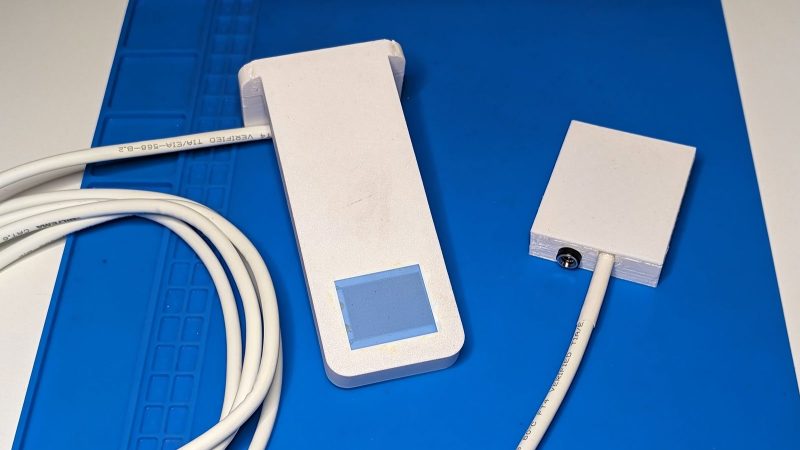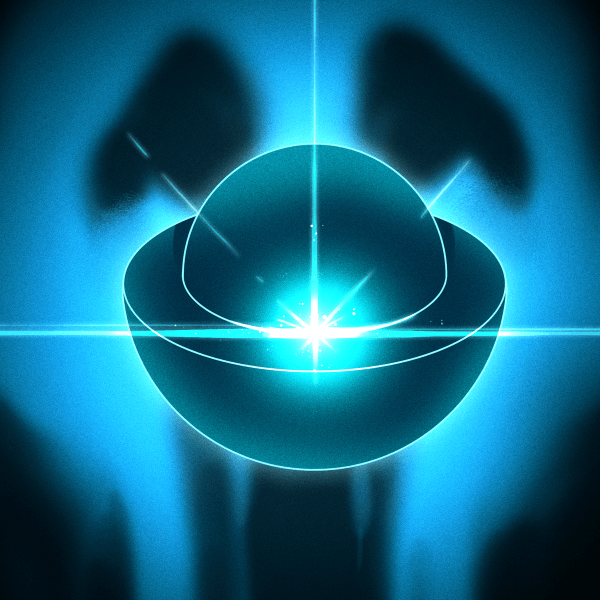If you’ve got a smart home, or you just want to know how soaked your garden is getting in the winter, you might want to measure rainfall. There are a bunch of ways to go about it, and this capacitive rainmeter solution from [Magnus Thome] might just be the perfect solution you’re looking for.
Like many who came before, [Magnus] had experimented with traditional resistive-based sensors using copper traces to measure water levels. As the soil moisture measuring set learned as well, corrosion tends to promise a pretty short life for these designs. Capacitive sensors, on the other hand, can be isolated from the water itself, and thus sense the levels without being subject to such degradation.
[Magnus] pairs the off-the-shelf capacitive sensor with an ESP32 charged with reading it and reporting back to Home Assistant. It’s also outfitted with a heater to keep it at a constant temperature to avoid it freezing over during those cold and snowy Swedish winters.
It’s a tidy way to integrate a quality commercial sensor with a DIY smart home setup. If you’ve been whipping up your own neat sensor networks for your smart home, don’t hesitate to let us know. Video after the break.

















Interesting way to measure rain intensity, but having the sensor heared to 45 degrees 24×7 seems like an energy inefficient way to get this info.
…heated
The heater draws less than 2W 👍
But it is a very good point, I’ll add to the code that it only heats up when it detects water/snow
I wonder whether this can actually measure rainfall and how accurate it is. Maybe the heater evaporated the rain drops fast enough that you can integrate the amount of water over time on the sensor. I’d like to see an experiment along these lines….
I was thinking along the lines of borrowing a good meter measuring rain volume and comparing the outputs. The sensor I use changes it’s capacitance a lot between drizzle and heavy rain so that’s good. But I get a feeling the value is a bit unlinear to translate to rain volume. That isn’t a problem of course, if I can’t come up with a math formula for translating capacitance to rain volume a translation table with interpolation between the data points could be used.
how to keep this sensor clean?
No need. As long as there hasn’t fallen a big fat leaf on top of it 😁 Capacitive sensor works touch less, that’s the point 👍
Bird shit and small sticks (from leaf stems I guess) are the biggest issue the tipping bucket rain gauge I have suffers from. Likely the first is the bigger problem for a capacitive sensor. I see matching to about 20% between the tipping bucket and an old style calibrated cylinder, manual check daily, rain gauge. It depends a bit on how heavy the rain is. And when I last cleaned the tipping bucket. Thats after calibrating the tipping bucket – it was well off. I would be somewhat surprised if a capacitive sensor did much better than – its raining soft/medium/hard judging on my car wipers.
It is not intended to do anything more precise than the resistive rain sensor which it replaces which is just that: to indicate rain intensity. I replaced (the very common) resistive sensor with this capacitive one (which oddly enough isn’t as common) because it isn’t sensitive to the harsh environment and doesn’t deteriorate as the resistive does.
My tipping bucket gets fouled by spider webs, and grows algae too. Not sure if the two are related, but both seem to stop the bucket tipping reliably and need to be cleaned off every couple of months.
So, is the point to count individual drops? How does it handle a very heavy rain?
The capacitance changes very well with the intensity of the rain. It is not counting drops but measuring the capacitance values different amount of water on the sensor plate results in. At some point with a heavy monsune it might of course be saturated but so far it has given clearly different values for different rain intensities, even heavy rain.
I think I misunderstood. This is not measuring the amount of rainfall over time, but is more of a qualitative measure of the intensity of the rain at any given point in time.
The Tempest weather station uses this exact method to both detect rain and measure rainfall. It is a tried and true solution.